Classes of Chemical Messengers:
- Autocrine chemical messengers- An autocrine chemical messenger stimulates the cell that originally secreted it.
- Paracrine chemical messengers- Paracrine chemical messengers act locally on nearby cells. These chemical messengers are secreted by one cell type into the extracellular fluid and affect surrounding cells.
- Neurotransmitters- Neurotransmitters are chemical messengers secreted by neurons that activate an adjacent cell, whether it is another neuron, a muscle cell, or a glandular cell.
- Endocrine chemical messengers- Endocrine chemical messengers are secreted into the bloodstream by certain glands and cells, which together constitute the endocrine distant from their source.
Functions of the Endocrine System:
- Metabolism.
- Control of food intake and digestion.
- Tissue development.
- Ion regulation.
- Water regulation.
- heart rate an blood pressure regulation.
- Control of blood glucose and other nutrients.
- Control of reproductive functions.
- Uterine contractions and milk release.
- Immune system regulation.
Lipid-Soluble Hormones
Lipid- soluble hormones are non polar, and include steroid hormones, thyroid hormones, and fatty acid derivative hormones, such as certain eicosanoids.
Transport of Lipid-Soluble Hormones
Because of their small size and low solubility in aqueous fluids, lipid-soluble hormones travel in the bloodstream attached to binding proteins, proteins that transport the hormones.
Water-Soluble Hormones
Water-soluble hormones are polar molecules; they include protein hormones, peptide hormones, and most amino acid derivative hormones.
Transport of Water-Soluble Hormones
Because water-soluble hormones can dissolve in blood, many circulate as free hormones, meaning that most of them dissolve directly into the blood and are delivered to their target tissue without attaching to a binding protein.
Lipid- soluble hormones are non polar, and include steroid hormones, thyroid hormones, and fatty acid derivative hormones, such as certain eicosanoids.
Transport of Lipid-Soluble Hormones
Because of their small size and low solubility in aqueous fluids, lipid-soluble hormones travel in the bloodstream attached to binding proteins, proteins that transport the hormones.
Water-Soluble Hormones
Water-soluble hormones are polar molecules; they include protein hormones, peptide hormones, and most amino acid derivative hormones.
Transport of Water-Soluble Hormones
Because water-soluble hormones can dissolve in blood, many circulate as free hormones, meaning that most of them dissolve directly into the blood and are delivered to their target tissue without attaching to a binding protein.
Stimulation of Hormone Release by Humoral Stimuli:
Blood-borne molecules can directly stimulate the release of some hormones. These molecules are referred to as humoral stimuli because they circulate in the blood. These hormones are sensitive to the the blood levels of a particular substance such as glucose, calcium, sodium.
Stimulation of Hormone Release by Neural Stimuli:
Following action potentials, neurons release a neurotransmitter into the synapse with the cells that produce the hormone.
Stimulation of Hormone Release by Hormonal Stimuli:
It occurs when a hormone is secreted that, in turn, stimulates the secretion of other hormones. The most common examples are hormones from the anterior pituitary gland, called tropic hormones.
Blood-borne molecules can directly stimulate the release of some hormones. These molecules are referred to as humoral stimuli because they circulate in the blood. These hormones are sensitive to the the blood levels of a particular substance such as glucose, calcium, sodium.
Stimulation of Hormone Release by Neural Stimuli:
Following action potentials, neurons release a neurotransmitter into the synapse with the cells that produce the hormone.
Stimulation of Hormone Release by Hormonal Stimuli:
It occurs when a hormone is secreted that, in turn, stimulates the secretion of other hormones. The most common examples are hormones from the anterior pituitary gland, called tropic hormones.
Negative Feedback by Hormones:
- The anterior pituitary gland secretes a tropic hormone, which travels in the blood to the target endocrine cell.
- The hormone from the target endocrine cell travels to its target.
- The hormone from the target endocrine cell also has a negative-feedback effect on the anterior pituitary and hypothalamus and decreases secretion of the tropic hormone.
- The anterior pituitary gland secretes a tropic hormone, which travels in the blood to the target endocrine cell.
- The hormone from the target endocrine cell travels to its target.
- The hormone from the target endocrine cell also has a positive-feedback effect on the anterior pituitary and increases secretion of the tropic hormone.
Nuclear Receptor Model:
- Lipid-soluble hormones diffuse through the plasma membrane.
- Lipid-soluble hormones bind to cytoplasmic receptors and travel to the nucleus or bind to nuclear receptors. Some lipid-soluble hormones bind receptors in the cytoplasm and then move into the nucleus.
- The hormone-receptor complex binds to a hormone response element on the DNA, acting as a transcription factor.
- The biding of the hormone-receptor complex to DNA stimulates the synthesis of messenger RNA (mRNA), which codes for specific proteins.
- The mRNA leaves the nucleus, passes into the cytoplasm of the cell, and binds to ribosomes, where it directs the synthesis of specific proteins.
- The newly synthesized proteins produce the cell's response to the lipid-soluble hormones- for example, the secretion of a new protein.
Membrane-Bound Receptors Activate G Proteins
- After a water-soluble hormone binds to its receptor, the G protein is activated.
- The activated alpha subunit, with GTP bound to it, binds to and activates an adenylate cyclase enzyme so that it converts ATP to cAMP.
- The cAMP can activate protein kinase enzymes, which phosphorylate specific enzymes activating them. The chemical reactions catalyzed by the activated enzymes produce the cell's response.
- Phosphodiesterase enzymes inactivate cAMP by converting cAMP to AMP.
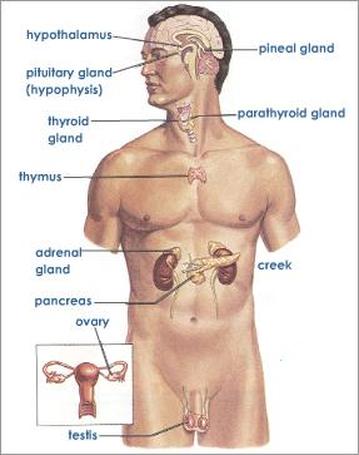
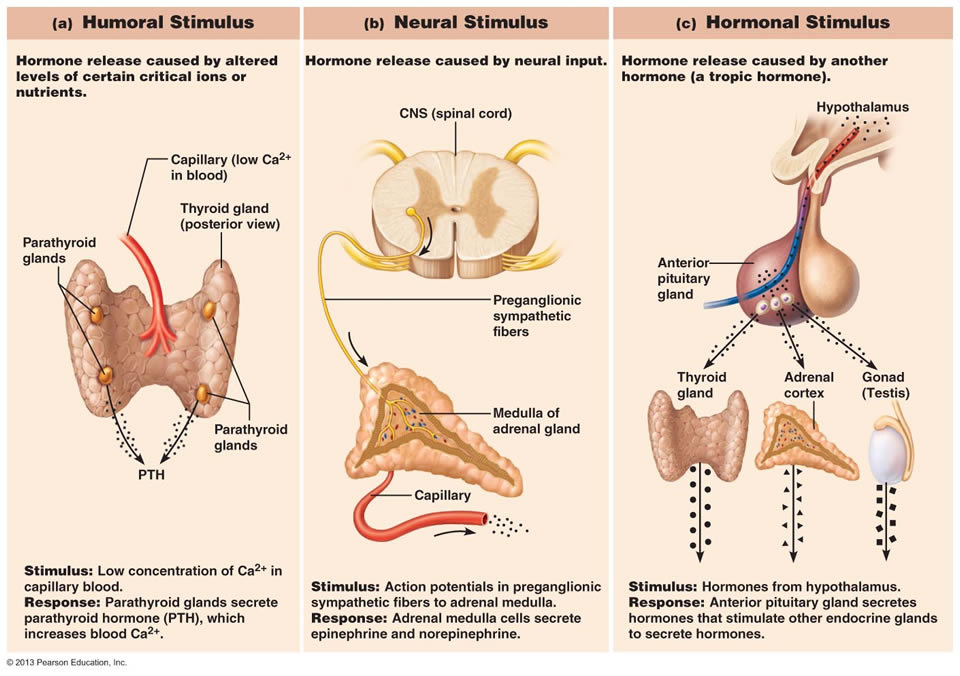
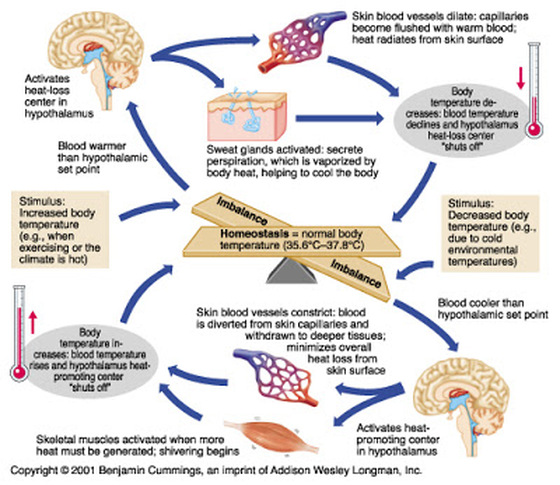

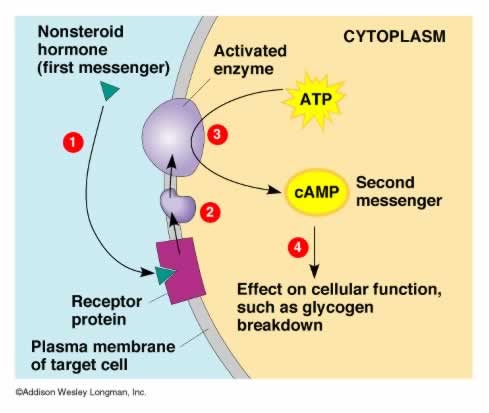
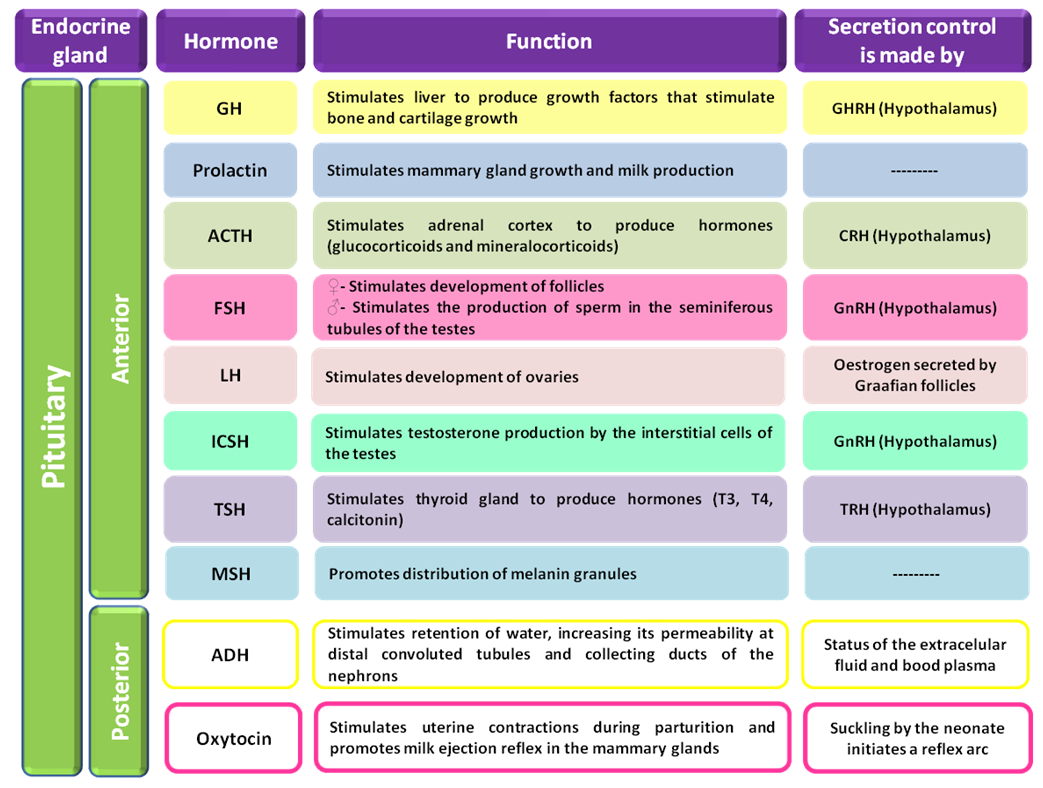
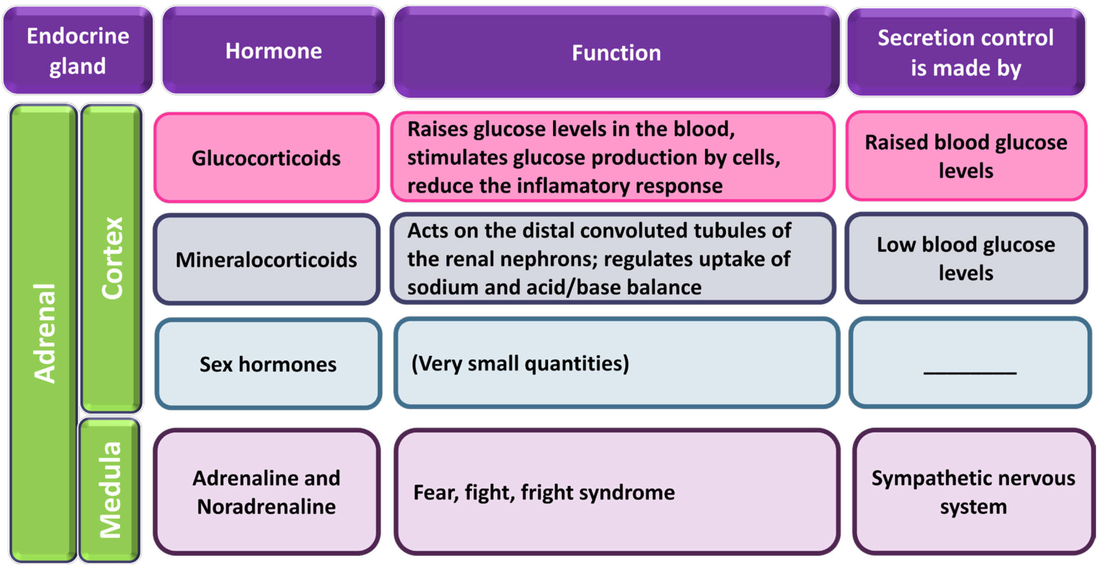
 RSS Feed
RSS Feed